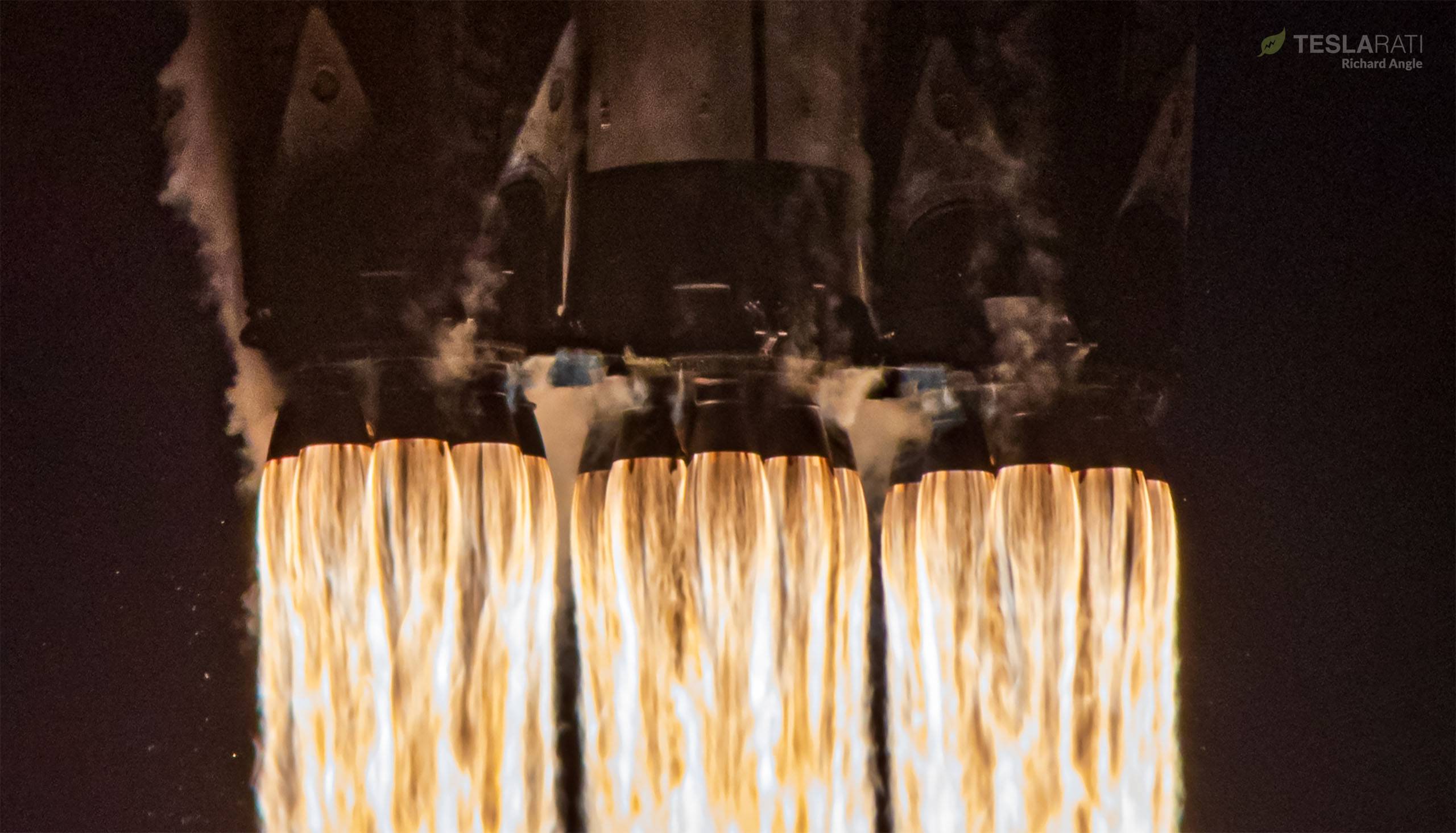
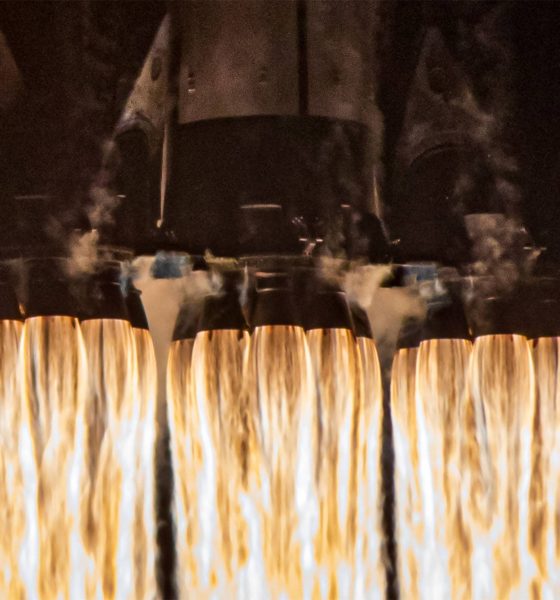
News
SpaceX’s spectacular USSF-67 Falcon Heavy launch in photos
On January 15th, SpaceX’s Falcon Heavy rocket lifted off for the second time in 75 days to launch another batch of US military payloads into orbits tens of thousands of kilometers above Earth’s surface.
Six and a half hours later, the US Space Systems Command (SSC) confirmed that Falcon Heavy had again completed the exceptionally difficult launch without issue. To deliver the USSF-67 mission’s payloads directly to geosynchronous orbit (GSO), the giant SpaceX rocket had to sacrifice one of its potentially reusable boosters and complete a complex six-hour ballet of rolls, burns, and spacecraft deployments. And for the second time in a row, Falcon Heavy did so without apparent issue.
In an SSC press release [PDF], Maj. Gen. Stephen Purdy, program executive officer for Assured Access to Space, said that the group “had another fantastic launch today on a Falcon Heavy.” He added that “while the launch itself was impressive,” he was “most proud of the fact that we placed important [national] capabilities into space.” And an impressive launch it certainly was.
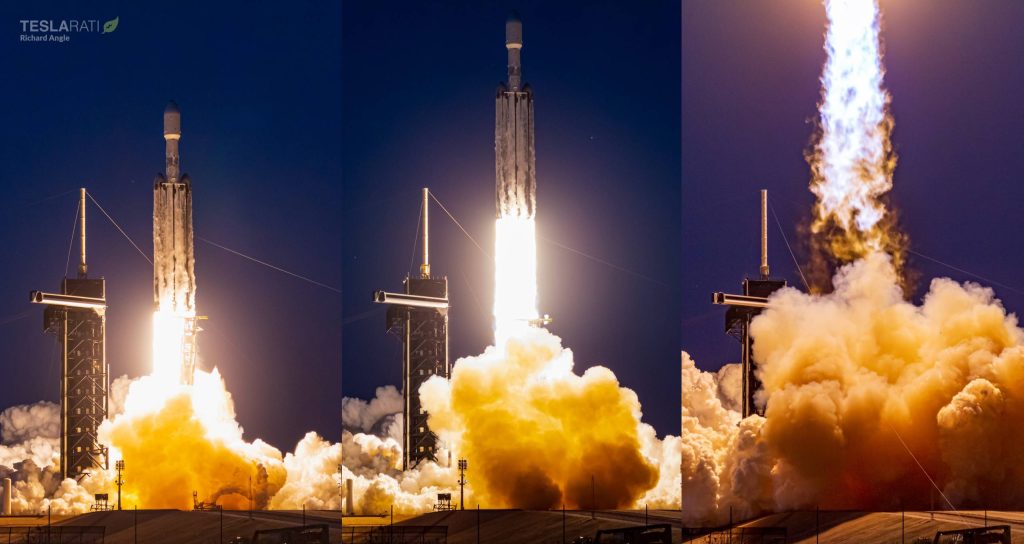
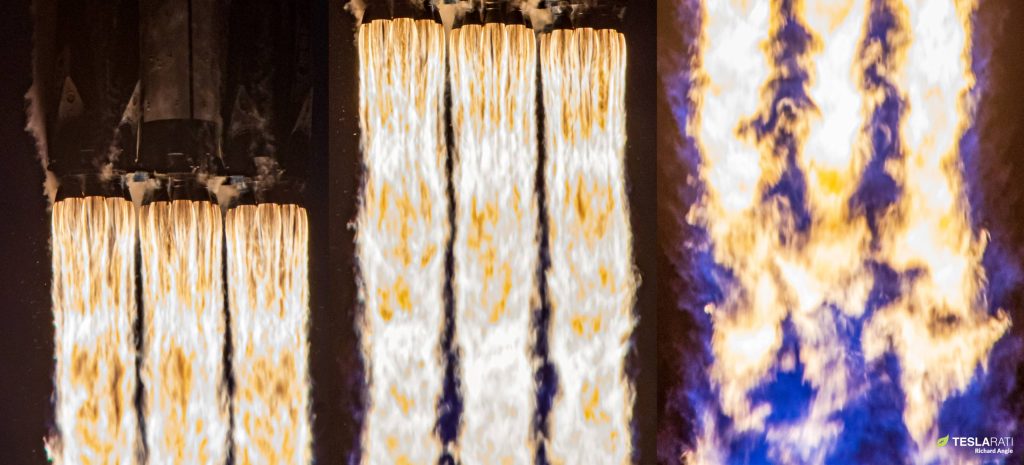
The update that's rolling out to the fleet makes full use of the front and rear steering travel to minimize turning circle. In this case a reduction of 1.6 feet just over the air— Wes (@wmorrill3) April 16, 2024
A Falcon (Heavy) spectacle
As previously discussed, USSF-67 was Falcon Heavy’s first twilight launch. The extraordinary cadence of SpaceX’s workhorse Falcon 9 rocket, which Falcon Heavy is derived from, caused twilight launches and the incredible light shows they can produce to become a fairly routine phenomena. But just under five years after its February 2018 debut, there had still never been a Falcon Heavy launch ‘jellyfish’ or ‘nebula.’ That thankfully changed on Sunday.
The rocket lifted off just ten or so minutes after sunset and soared into the fading purple skies. Those skies were still relatively bright at ground-level, reducing the amount of contrast, but the resulting light show was still spectacular as Falcon Heavy and its immense exhaust plume ascended back into the sunlight. The artificial sunrise lit up that pillar-like plume with the colors of sunrise and, eventually, bright daylight.
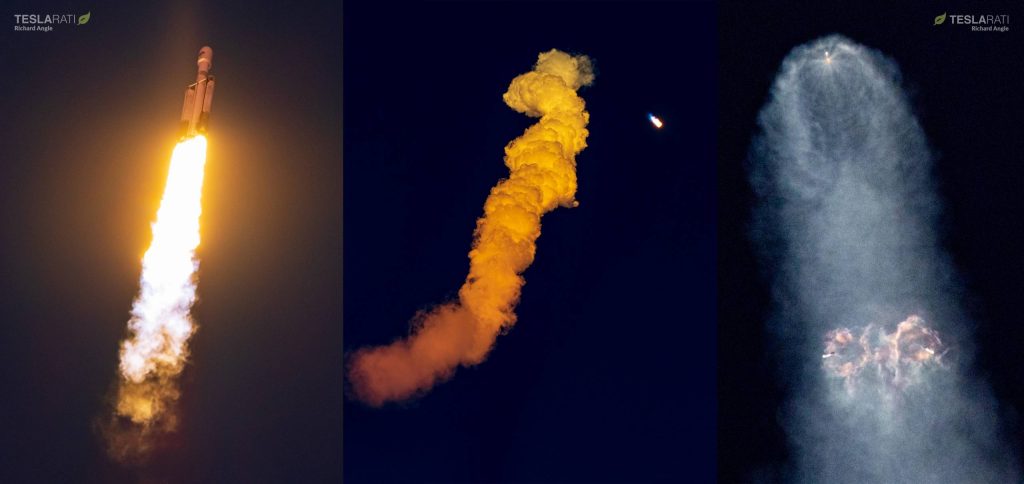
Close-up views enabled by tracking telescopes captured the true drama, which began shortly after Falcon Heavy’s twin side boosters separated from the rocket’s main core stage and upper stage, flipped around, and ignited their engines to fly back to the Florida coast they’d only just lifted off from. As the nine-engine center core continued towards space, each booster fired up one and then three Merlin 1D engines for their boostback burns.
A view from Astronomy Live captured the moment of boostback burn ignition, during which the side boosters visibly blasted ‘craters’ the Falcon Heavy center core’s much more powerful plume. As those plumes interacted, the fluid dynamics and light produced by multiple Merlin 1D engines combined to create chaotic whisps of orange, red, and yellow – akin to an exploding nebula. The moments prior were also spectacular as the two side boosters, lit up by direct sunlight against the nearly black sky, began gently floating away from the center core and spinning around with bursts from several nitrogen gas thrusters – a brief moment of serenity before the violence of engine ignition.
On a chariot of fire
But as Maj. Gen. Purdy noted, the purpose of USSF-67 – spectacle aside – was to carry a number of important payloads into orbit.
“After both side boosters touched down, SpaceX ended its live coverage at the request of the Space Force, reiterating the mission’s secretive customer and nature. The USSF hasn’t confirmed much about the USSF-67 mission’s payloads, but Falcon Heavy is known to be carrying a geostationary communications relay satellite called CBAS-2 and likely built by Boeing. CBAS-2 is joined by Northrop Grumman’s third Long Duration Propulsive EELV or LDPE-3A, a combination of a propulsive kick stage and a satellite. LDPE-3A is carrying a collection of rideshare satellites and payloads and is designed to operate for months in orbit. Using USSF-44 as a guide, the total USSF-67 payload could weigh roughly 3.75 to 4.75 tons (8,250-10,500 lb).”
Teslarati.com – January 15th, 2023
The same SSC press release provides more detail, noting that LDPE-3A carries two hosted payloads – Catcher and WASSAT. Catcher is a space weather instrument developed by the Aerospace Corporation, while WASSAT is a prototype [PDF] of a wide-angle observation instrument designed to track other satellites in GSO. LDPE is also hosting “three payloads developed by the Space Rapid Capabilities Office (SRCO),” including “two operational prototypes for enhanced situational awareness, and an operational prototype crypto/interface encryption payload providing secure space-to-ground communications capability.”
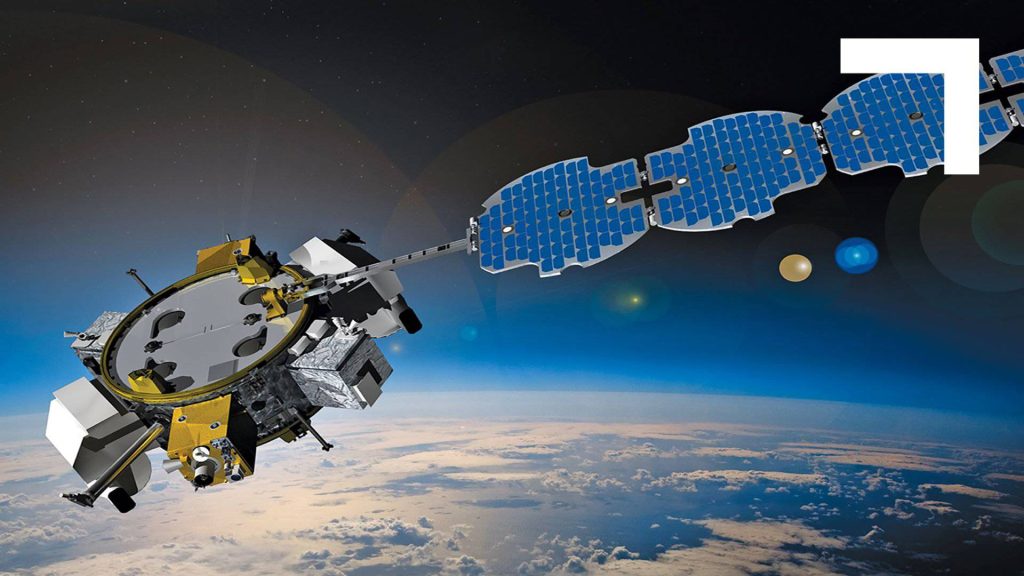
Two down, one to go
For Falcon Heavy side boosters B1064 and B1065, both of which supported USSF-44 and USSF-67, their missions are far from over. Their second successful side-by-side landing has cleared the boosters to be reused on a third US military launch called USSF-52. Originally known as AFSPC-52, the mission was Falcon Heavy’s first operational US military launch contract and the first time the rocket beat competitor United Launch Alliance (ULA) during a competitive procurement.
Next Spaceflight reports that USSF-52 is scheduled to launch no earlier than April 10th, 2023, less than three months from now. Once that mission is complete, Falcon Heavy will have no more US military missions on contract, although more will almost certainly be rewarded sooner than later. USSF-52 is sandwiched between two other Falcon Heavy launches. Next Spaceflight also reports that Falcon Heavy could launch the ViaSat-3 communications satellite as early as March 2023 and the Jupiter-3 (EchoStar 24) communications satellite as early as May 2023, making for a busy 90 days.
For that trio to happen as scheduled, SpaceX will have to beat Falcon Heavy’s record 75-day turnaround, which has coincidentally (?) occurred twice: first between Arabsat 6A and STP-2, and again between USSF-44 and USSF-67. Including USSF-67, SpaceX has up to five Falcon Heavy launches scheduled this year.

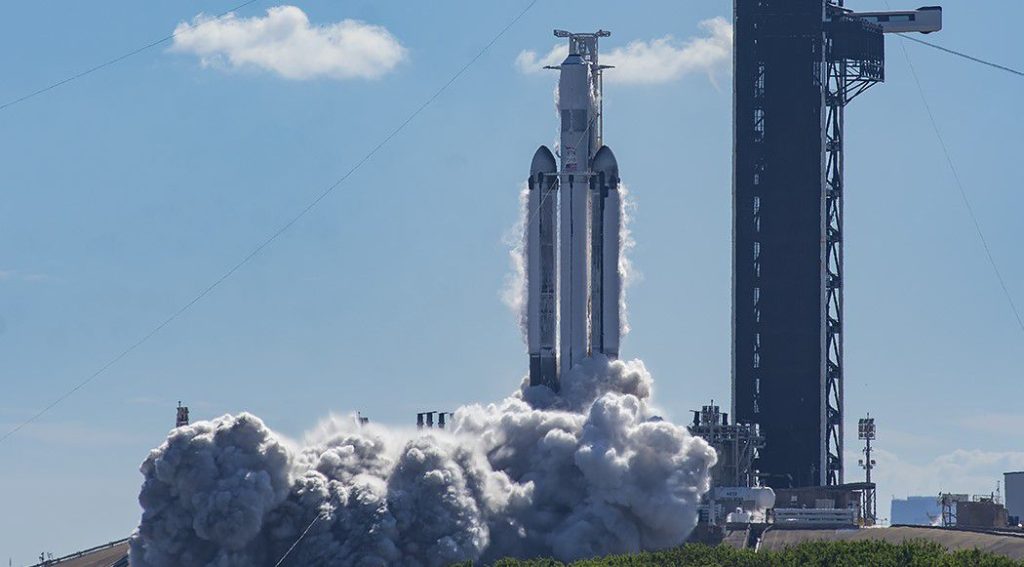
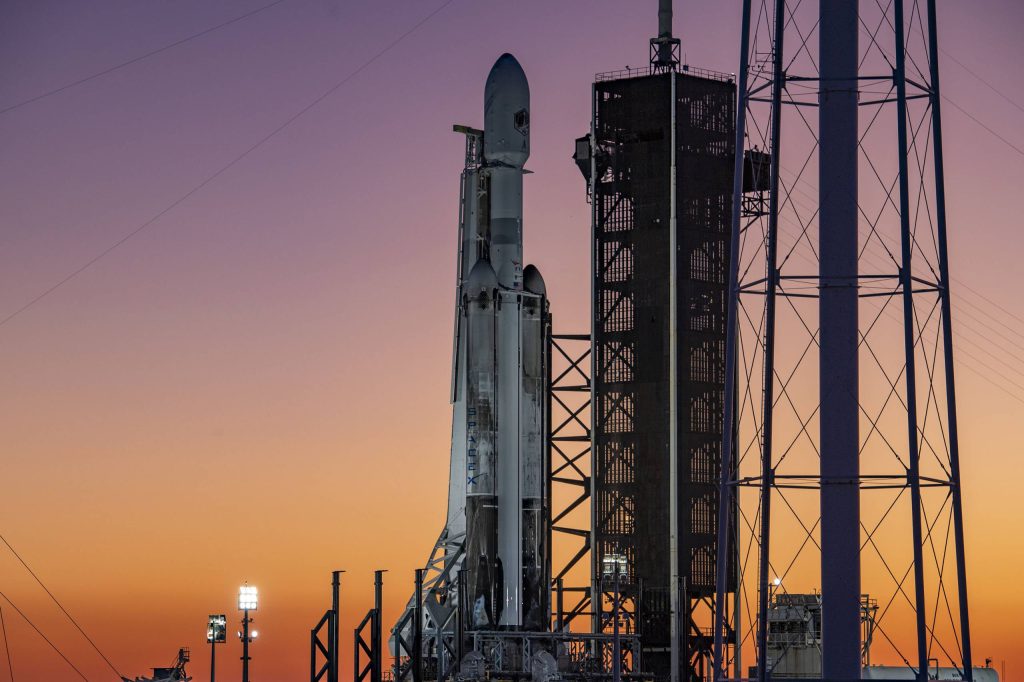
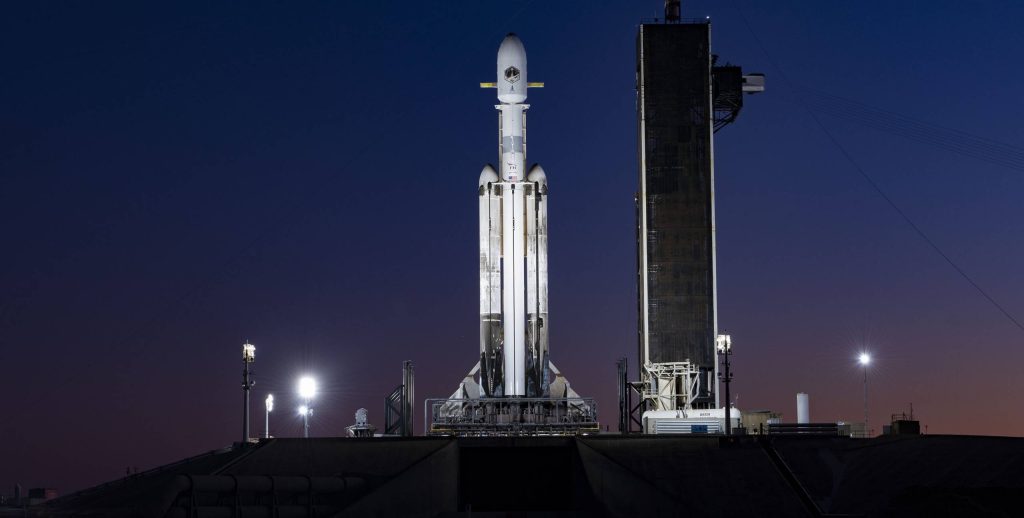
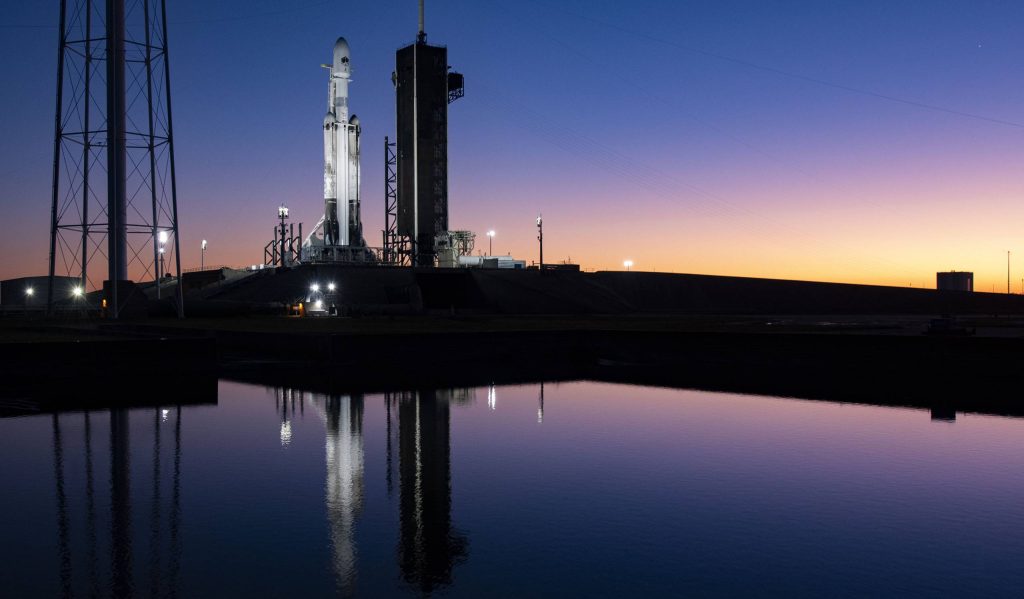

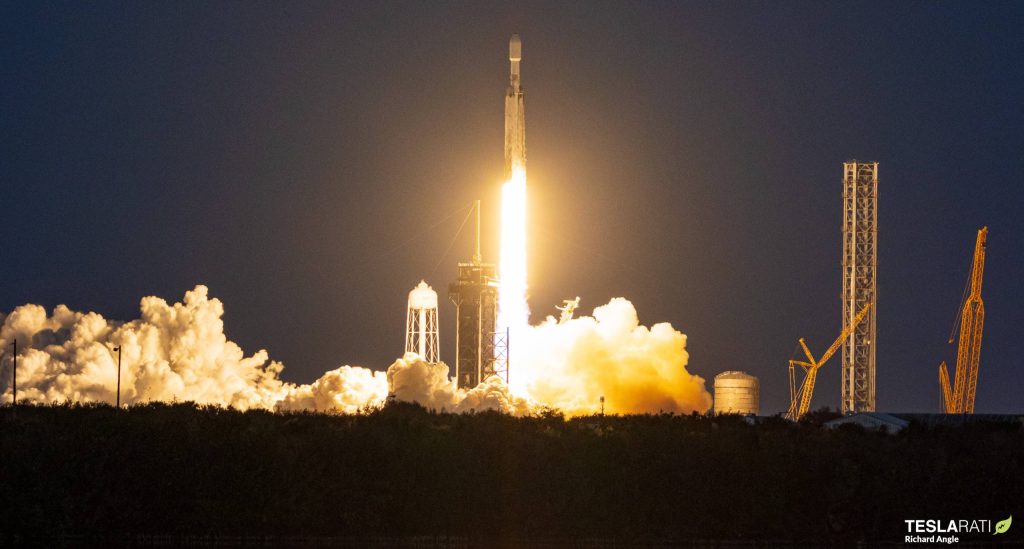
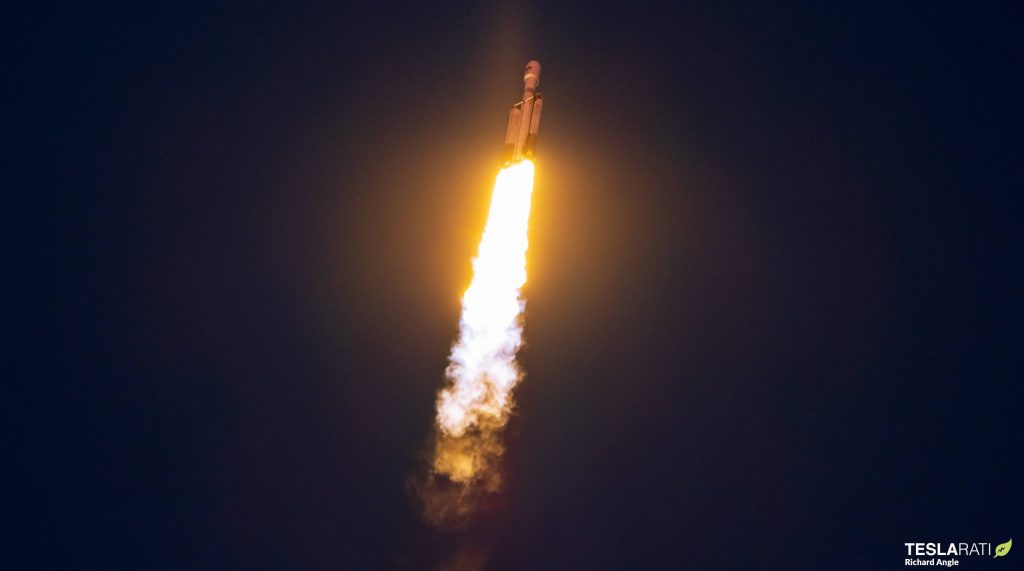
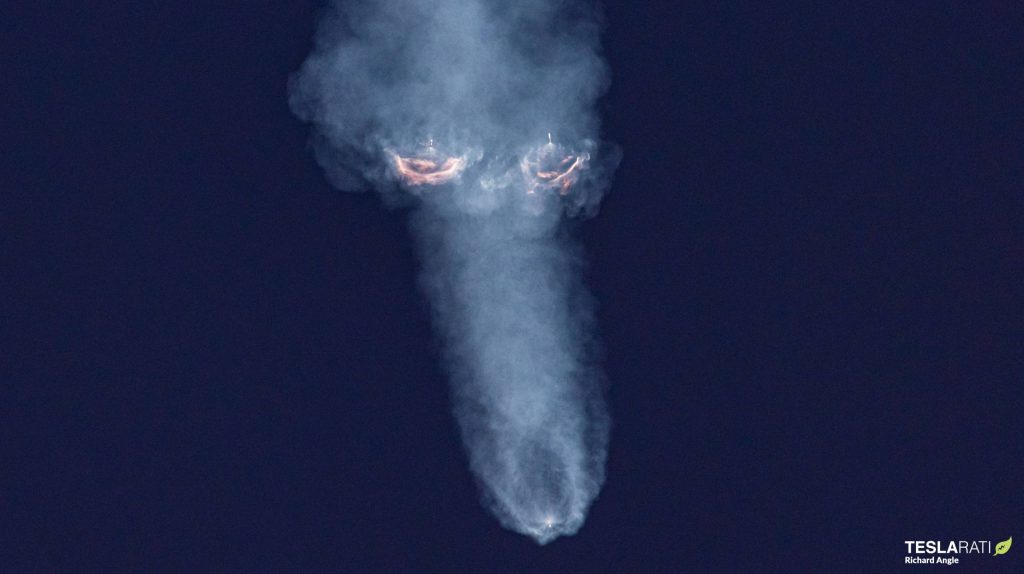
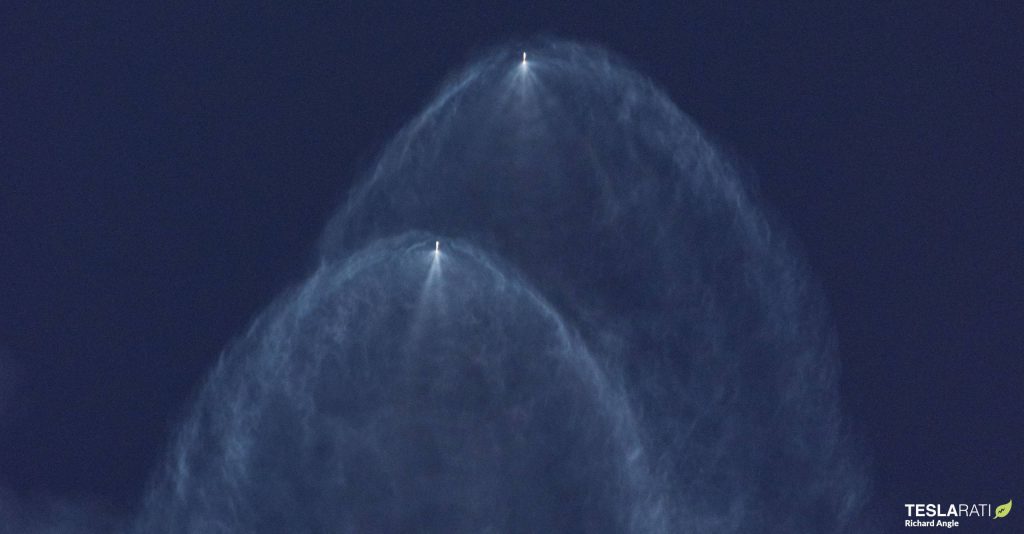
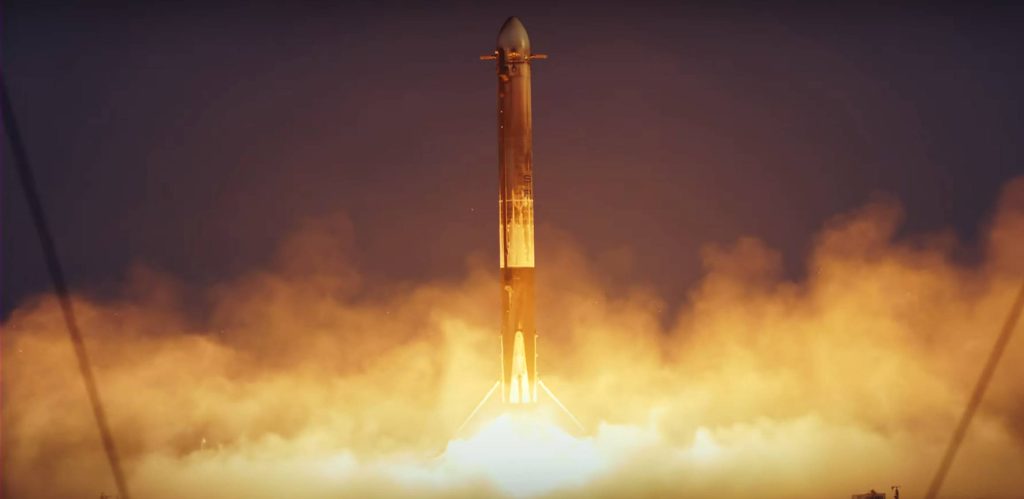
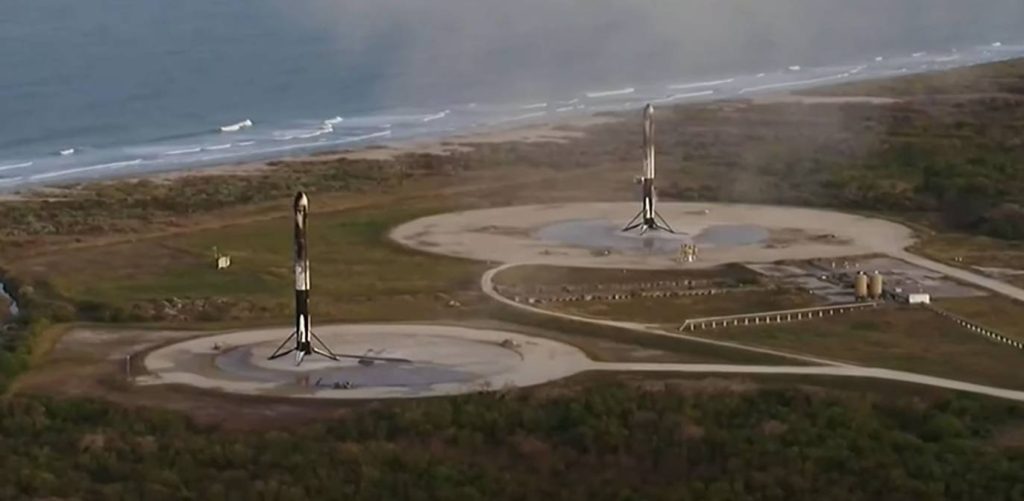

News
Nvidia CEO Jensen Huang explains difference between Tesla FSD and Alpamayo
“Tesla’s FSD stack is completely world-class,” the Nvidia CEO said.

NVIDIA CEO Jensen Huang has offered high praise for Tesla’s Full Self-Driving (FSD) system during a Q&A at CES 2026, calling it “world-class” and “state-of-the-art” in design, training, and performance.
More importantly, he also shared some insights about the key differences between FSD and Nvidia’s recently announced Alpamayo system.
Jensen Huang’s praise for Tesla FSD
Nvidia made headlines at CES following its announcement of Alpamayo, which uses artificial intelligence to accelerate the development of autonomous driving solutions. Due to its focus on AI, many started speculating that Alpamayo would be a direct rival to FSD. This was somewhat addressed by Elon Musk, who predicted that “they will find that it’s easy to get to 99% and then super hard to solve the long tail of the distribution.”
During his Q&A, Nvidia CEO Jensen Huang was asked about the difference between FSD and Alpamayo. His response was extensive:
“Tesla’s FSD stack is completely world-class. They’ve been working on it for quite some time. It’s world-class not only in the number of miles it’s accumulated, but in the way it’s designed, the way they do training, data collection, curation, synthetic data generation, and all of their simulation technologies.
“Of course, the latest generation is end-to-end Full Self-Driving—meaning it’s one large model trained end to end. And so… Elon’s AD system is, in every way, 100% state-of-the-art. I’m really quite impressed by the technology. I have it, and I drive it in our house, and it works incredibly well,” the Nvidia CEO said.
Nvidia’s platform approach vs Tesla’s integration
Huang also stated that Nvidia’s Alpamayo system was built around a fundamentally different philosophy from Tesla’s. Rather than developing self-driving cars itself, Nvidia supplies the full autonomous technology stack for other companies to use.
“Nvidia doesn’t build self-driving cars. We build the full stack so others can,” Huang said, explaining that Nvidia provides separate systems for training, simulation, and in-vehicle computing, all supported by shared software.
He added that customers can adopt as much or as little of the platform as they need, noting that Nvidia works across the industry, including with Tesla on training systems and companies like Waymo, XPeng, and Nuro on vehicle computing.
“So our system is really quite pervasive because we’re a technology platform provider. That’s the primary difference. There’s no question in our mind that, of the billion cars on the road today, in another 10 years’ time, hundreds of millions of them will have great autonomous capability. This is likely one of the largest, fastest-growing technology industries over the next decade.”
He also emphasized Nvidia’s open approach, saying the company open-sources its models and helps partners train their own systems. “We’re not a self-driving car company. We’re enabling the autonomous industry,” Huang said.
Elon Musk
Elon Musk confirms xAI’s purchase of five 380 MW natural gas turbines
The deal, which was confirmed by Musk on X, highlights xAI’s effort to aggressively scale its operations.

xAI, Elon Musk’s artificial intelligence startup, has purchased five additional 380 MW natural gas turbines from South Korea’s Doosan Enerbility to power its growing supercomputer clusters.
The deal, which was confirmed by Musk on X, highlights xAI’s effort to aggressively scale its operations.
xAI’s turbine deal details
News of xAI’s new turbines was shared on social media platform X, with user @SemiAnalysis_ stating that the turbines were produced by South Korea’s Doosan Enerbility. As noted in an Asian Business Daily report, Doosan Enerbility announced last October that it signed a contract to supply two 380 MW gas turbines for a major U.S. tech company. Doosan later noted in December that it secured an order for three more 380 MW gas turbines.
As per the X user, the gas turbines would power an additional 600,000+ GB200 NVL72 equivalent size cluster. This should make xAI’s facilities among the largest in the world. In a reply, Elon Musk confirmed that xAI did purchase the turbines. “True,” Musk wrote in a post on X.
xAI’s ambitions
Recent reports have indicated that xAI closed an upsized $20 billion Series E funding round, exceeding the initial $15 billion target to fuel rapid infrastructure scaling and AI product development. The funding, as per the AI startup, “will accelerate our world-leading infrastructure buildout, enable the rapid development and deployment of transformative AI products.”
The company also teased the rollout of its upcoming frontier AI model. “Looking ahead, Grok 5 is currently in training, and we are focused on launching innovative new consumer and enterprise products that harness the power of Grok, Colossus, and 𝕏 to transform how we live, work, and play,” xAI wrote in a post on its website.
Elon Musk
Elon Musk’s xAI closes upsized $20B Series E funding round
xAI announced the investment round in a post on its official website.

xAI has closed an upsized $20 billion Series E funding round, exceeding the initial $15 billion target to fuel rapid infrastructure scaling and AI product development.
xAI announced the investment round in a post on its official website.
A $20 billion Series E round
As noted by the artificial intelligence startup in its post, the Series E funding round attracted a diverse group of investors, including Valor Equity Partners, Stepstone Group, Fidelity Management & Research Company, Qatar Investment Authority, MGX, and Baron Capital Group, among others.
Strategic partners NVIDIA and Cisco Investments also continued support for building the world’s largest GPU clusters.
As xAI stated, “This financing will accelerate our world-leading infrastructure buildout, enable the rapid development and deployment of transformative AI products reaching billions of users, and fuel groundbreaking research advancing xAI’s core mission: Understanding the Universe.”
xAI’s core mission
Th Series E funding builds on xAI’s previous rounds, powering Grok advancements and massive compute expansions like the Memphis supercluster. The upsized demand reflects growing recognition of xAI’s potential in frontier AI.
xAI also highlighted several of its breakthroughs in 2025, from the buildout of Colossus I and II, which ended with over 1 million H100 GPU equivalents, and the rollout of the Grok 4 Series, Grok Voice, and Grok Imagine, among others. The company also confirmed that work is already underway to train the flagship large language model’s next iteration, Grok 5.
“Looking ahead, Grok 5 is currently in training, and we are focused on launching innovative new consumer and enterprise products that harness the power of Grok, Colossus, and 𝕏 to transform how we live, work, and play,” xAI wrote.








